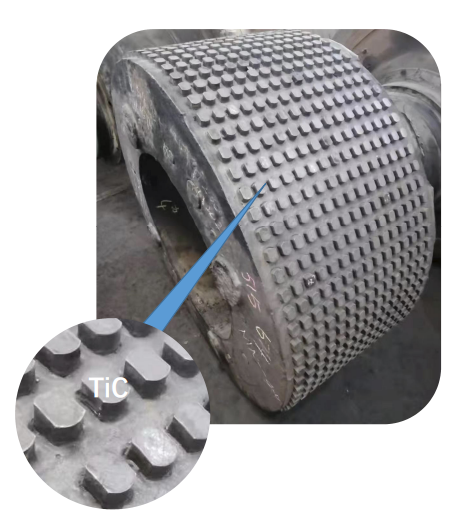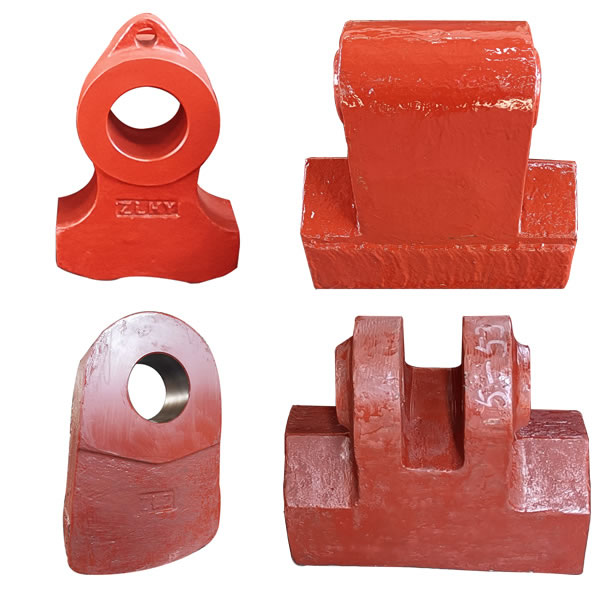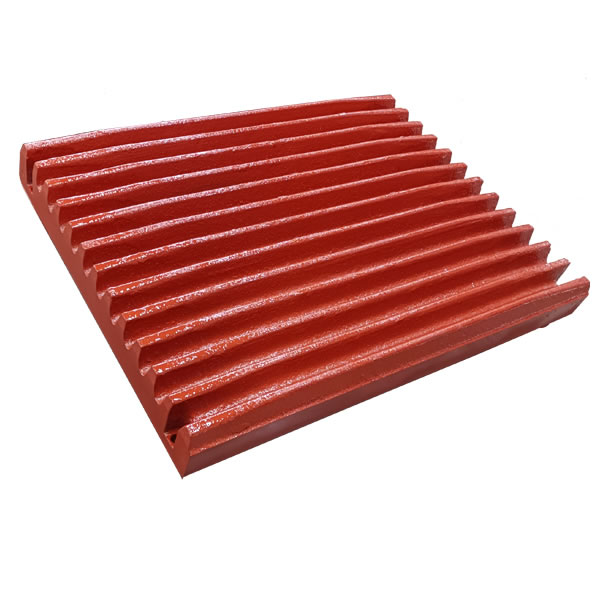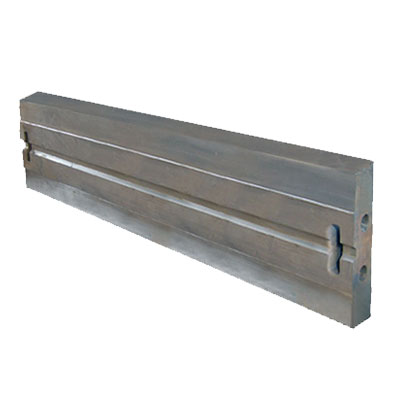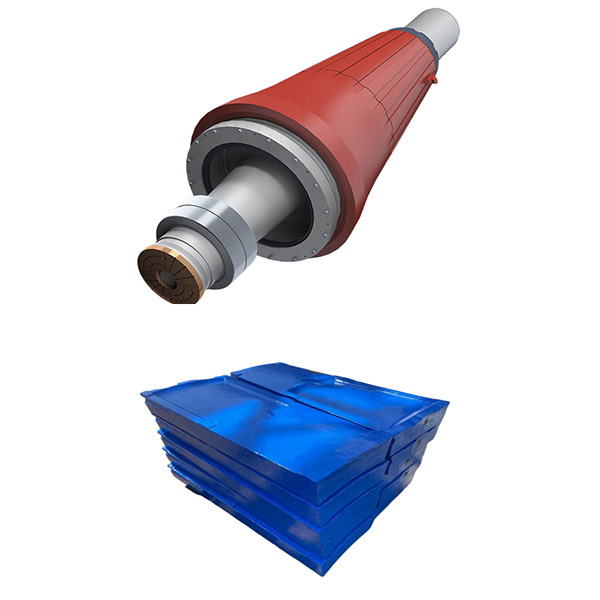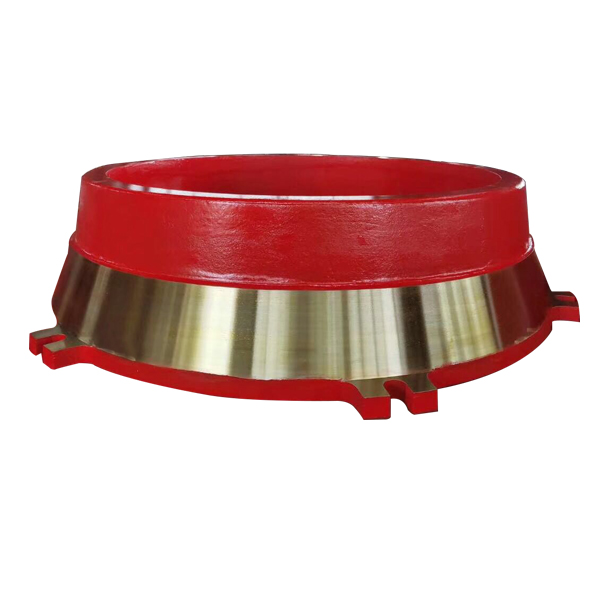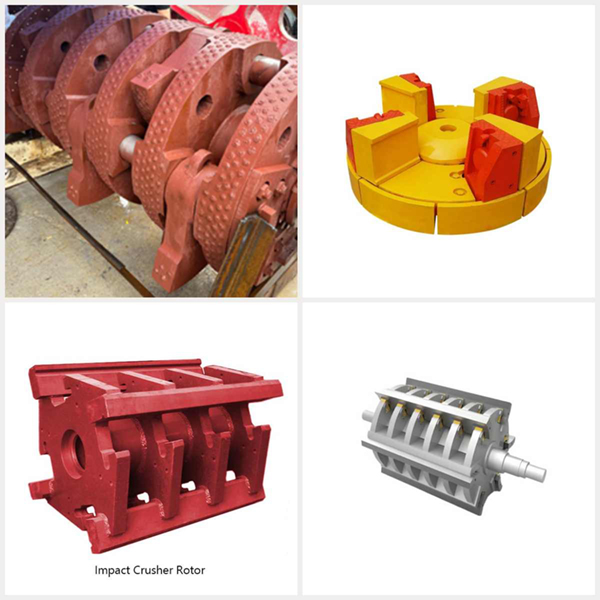Around 2008, roller presses began to be used in ore production lines to squeeze materials such as iron ore. Since the strength and hardness of materials such as iron ore are much higher than those of limestone, clinker and other materials in the cement industry, the traditional welding rollers and alloy rollers used in the mining industry can no longer meet production needs. In 2009, spike rollers inlaid with tungsten carbide hard alloy spikes began to be used in the mining industry and achieved good results. They were gradually used in cement roller presses after 2012.
With the increasing application of stud rollers, various roller manufacturers have differences and differences in the production and manufacturing process of stud roller. For example, the selection of column nail diameters is different, including 16mm, 20mm, 22mm, etc. The combination of column nails and substrates includes adhesive fixation, interference fit assembly, direct casting, etc.
1、The structure and manufacturing method of traditional stud rollers
A column nail installation hole matching the column nail size is drilled on the outer circle of the roller sleeve using a special boring and milling machine. Use anaerobic adhesive to glue the column nails into the base hole, and the head of the column nail is exposed about 4mm from the base surface. Some manufacturers use interference fit to press the column nails into the installation holes.
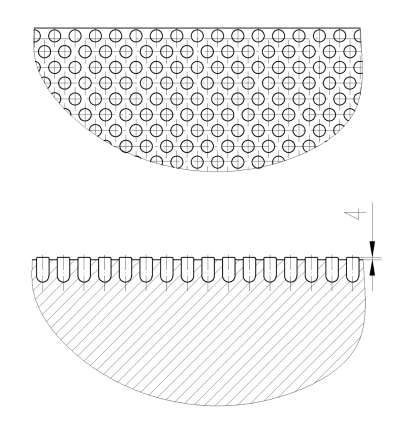
2、The structure and manufacturing method of the cast stud roller
The column nail material of the cast stud roller is titanium carbide (TiC), not tungsten carbide (WC), and the column nail cannot be replaced.
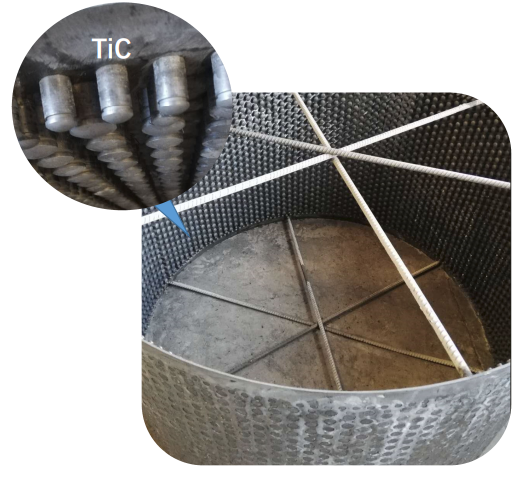
3、Structure and manufacturing method of cast stud roller
The cast stud roller is made by casting long strips of titanium carbide on the roller sleeve base material, and then surfacing wear-resistant materials around the titanium carbide.
